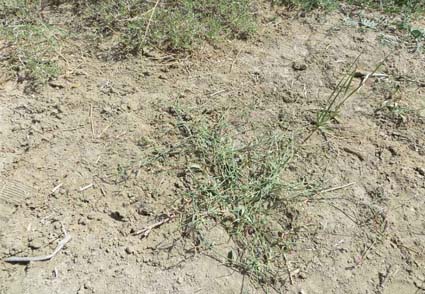Abstract
A new species, Astragalus taledensis P. Yan & H. Zhang (Leguminosae), is described from Xinjiang Province, China. Astragalus taledensis is distinguished from other species of Astragalus by its simple leaf, prostrate stem and the type of the legumes. The stamens of A. taledensis are nearly equal in shape and length, which is similar to some species of A. sect. Ornithopodium (eastern group). The species is most similar to Astragalus hamiensis S. B. Ho, from which it differs for the simple leaf, prostrate stem, length of the flower, bract and calyx, and width of the legume.
References
<p>Brullo, S., Giusso del Galdo, G. & Musarella, C.M. (2012) Taxonomic revision of <em>Astragalus angustifolius </em>group (Fabaceae). <em>Bocconea</em> 24: 19–52.</p>
<p>Chang, Z.Y., XU, L.R. & Podlech, D. (2007)<em> Astragalus eerqisiensis</em> and <em>A.shadiensis</em>, two new species of Leguminosae from Xinjiang, China. <em>Acta Botanica Boreali-Occidentalia Sinica</em> 2007 (1): 168–172.</p>
<p>Fu, K.J. (1993) Leguminosae. <em>In: </em>Wu, Z.Y. & Raven, P.H. (Eds.) <em>Flora of China 42 (1). </em>Science Press, Beijing, pp. 252–271.</p>
<p>IUCN (2019) <em>Guidelines for using the IUCN Red List categories and criteria. Version 14</em>. Prepared by the Standards and Petitions Committee, Cambridge U.K. Available from: https://www.iucnredlist.org/resources/redlistguidelines (accessed 20 October 2021)</p>
<p>Linnaeus, C. (1753) <em>Species Plantarum</em>. L. Salvius, Stockholm,755 pp.</p>
<p>Musarella, C.M., Brullo, S. & Giusso del Galdo, G. (2020) Contribution to the Orophilous Cushion-Like Vegetation of Central-Southern and Insular Greece. <em>Plants</em> 2020, 9, 1678. https://doi.org/10.3390/plants9121678</p>
<p>Perrino, E.V., Valerio, F., Jallali, S., Trani, A. & Mezzapesa, G.N. (2021) Ecological and Biological Properties of <em>Satureja cuneifolia</em> Ten. and <em>Thymus spinulosus</em> Ten.: Two Wild Officinal Species of Conservation Concern in Apulia (Italy). A Preliminary Survey. <em>Plants</em> 2021, 10, 1952. https://doi.org/10.3390/plants10091952</p>
<p>Perrino, E.V., Silletti, G.N., Erben, M. & Wagensommer, R.P. (2018) <em>Viola cassinensis</em> subsp. <em>lucana</em> (Violaceae), a new subspecies from the Lucanian Apennine, southern Italy. <em>Phyton (Horn, Austria)</em> 58 (2): 109–115. https://doi.org/10.12905/0380.phyton58(2)-2018-0109</p>
<p>Podlech, D. & Zarre, Sh. (2013) <em>A taxonomic revision of the genus Astragalus L. (Leguminosae) in the Old World. </em>Vol. Ⅲ. pp 1641–2439.</p>
<p>Saðiroðlu, M. & Eker, I. (2021) <em>Gladiolus aladagensis</em><strong> </strong>(Iridaceae), a new species from Turkey. <em>Phytotaxa</em> 478 (1): 151–161. <strong> </strong>https://doi.org/10.11646/phytotaxa.478.1.11</p>
<p>S.B.Ho.(1983) Prediction of <em>Astragalus</em> genus in Chinese Flora[J]. <em>Bulletin of Botany</em> 3 (1): 43.</p>
<p>Wagensommer, R.P., Bartolucci, F., Fiorentino, M., Licht, W., Peccenini, S., Perrino, E.V. & Venanzoni, R. (2017) First record for the flora of Italy and lectotypification of the name <em>Linum elegans</em> (Linaceae). <em>Phytotaxa</em> 296 (2): 161–170. https://doi.org/10.11646/phytotaxa.296.2.5</p>
<p>Wagensommer, R.P., Venanzoni, R. (2021) <em>Geranium lucarinii sp. nov.</em> and re-evaluation of<em> G. kikianum </em>(Geraniaceae). <em>Phytotaxa</em> 489 (3): 252–262. https://doi.org/10.11646/phytotaxa.489.3.2</p>
<p>Zhai, W. & Yan, P. (2010) <em>Astragalus beitashanensis</em>, a new species of Leguminosae from Xinjiang, China. <em>Novon</em> 20 (1): 21–22. https://doi.org/10.3417/2008017</p>
<p>Chang, Z.Y., XU, L.R. & Podlech, D. (2007)<em> Astragalus eerqisiensis</em> and <em>A.shadiensis</em>, two new species of Leguminosae from Xinjiang, China. <em>Acta Botanica Boreali-Occidentalia Sinica</em> 2007 (1): 168–172.</p>
<p>Fu, K.J. (1993) Leguminosae. <em>In: </em>Wu, Z.Y. & Raven, P.H. (Eds.) <em>Flora of China 42 (1). </em>Science Press, Beijing, pp. 252–271.</p>
<p>IUCN (2019) <em>Guidelines for using the IUCN Red List categories and criteria. Version 14</em>. Prepared by the Standards and Petitions Committee, Cambridge U.K. Available from: https://www.iucnredlist.org/resources/redlistguidelines (accessed 20 October 2021)</p>
<p>Linnaeus, C. (1753) <em>Species Plantarum</em>. L. Salvius, Stockholm,755 pp.</p>
<p>Musarella, C.M., Brullo, S. & Giusso del Galdo, G. (2020) Contribution to the Orophilous Cushion-Like Vegetation of Central-Southern and Insular Greece. <em>Plants</em> 2020, 9, 1678. https://doi.org/10.3390/plants9121678</p>
<p>Perrino, E.V., Valerio, F., Jallali, S., Trani, A. & Mezzapesa, G.N. (2021) Ecological and Biological Properties of <em>Satureja cuneifolia</em> Ten. and <em>Thymus spinulosus</em> Ten.: Two Wild Officinal Species of Conservation Concern in Apulia (Italy). A Preliminary Survey. <em>Plants</em> 2021, 10, 1952. https://doi.org/10.3390/plants10091952</p>
<p>Perrino, E.V., Silletti, G.N., Erben, M. & Wagensommer, R.P. (2018) <em>Viola cassinensis</em> subsp. <em>lucana</em> (Violaceae), a new subspecies from the Lucanian Apennine, southern Italy. <em>Phyton (Horn, Austria)</em> 58 (2): 109–115. https://doi.org/10.12905/0380.phyton58(2)-2018-0109</p>
<p>Podlech, D. & Zarre, Sh. (2013) <em>A taxonomic revision of the genus Astragalus L. (Leguminosae) in the Old World. </em>Vol. Ⅲ. pp 1641–2439.</p>
<p>Saðiroðlu, M. & Eker, I. (2021) <em>Gladiolus aladagensis</em><strong> </strong>(Iridaceae), a new species from Turkey. <em>Phytotaxa</em> 478 (1): 151–161. <strong> </strong>https://doi.org/10.11646/phytotaxa.478.1.11</p>
<p>S.B.Ho.(1983) Prediction of <em>Astragalus</em> genus in Chinese Flora[J]. <em>Bulletin of Botany</em> 3 (1): 43.</p>
<p>Wagensommer, R.P., Bartolucci, F., Fiorentino, M., Licht, W., Peccenini, S., Perrino, E.V. & Venanzoni, R. (2017) First record for the flora of Italy and lectotypification of the name <em>Linum elegans</em> (Linaceae). <em>Phytotaxa</em> 296 (2): 161–170. https://doi.org/10.11646/phytotaxa.296.2.5</p>
<p>Wagensommer, R.P., Venanzoni, R. (2021) <em>Geranium lucarinii sp. nov.</em> and re-evaluation of<em> G. kikianum </em>(Geraniaceae). <em>Phytotaxa</em> 489 (3): 252–262. https://doi.org/10.11646/phytotaxa.489.3.2</p>
<p>Zhai, W. & Yan, P. (2010) <em>Astragalus beitashanensis</em>, a new species of Leguminosae from Xinjiang, China. <em>Novon</em> 20 (1): 21–22. https://doi.org/10.3417/2008017</p>


